Your nails might not be the first place you look to for signs that you’re killing it at this life thing, but unexpectedly, you can tell a lot about your health from your nails. What do healthy nails look like, however? First, “ normal” fingernails should have white tips with a smooth finish and subtle shine, Dana Stern, M.D., assistant clinical professor of dermatology at Mount Sinai Medical School, tells Tone. Your nail beds should be meat-colored, meaning they dispose of pink, tan, or brownish. “ Cuticles are complete and well moisturized,” Dr. Stern adds. “ Hangnails are absent.”
Still, shape, or structure starts to look a bit odd for reasons beyond normal wear — say-so, If your nail color. Stern says. They are the most common nail problems that potentially gesture commodity that’s further than skin-deep, according to dermatologists.
1. You have small dents on the surface of your nail.
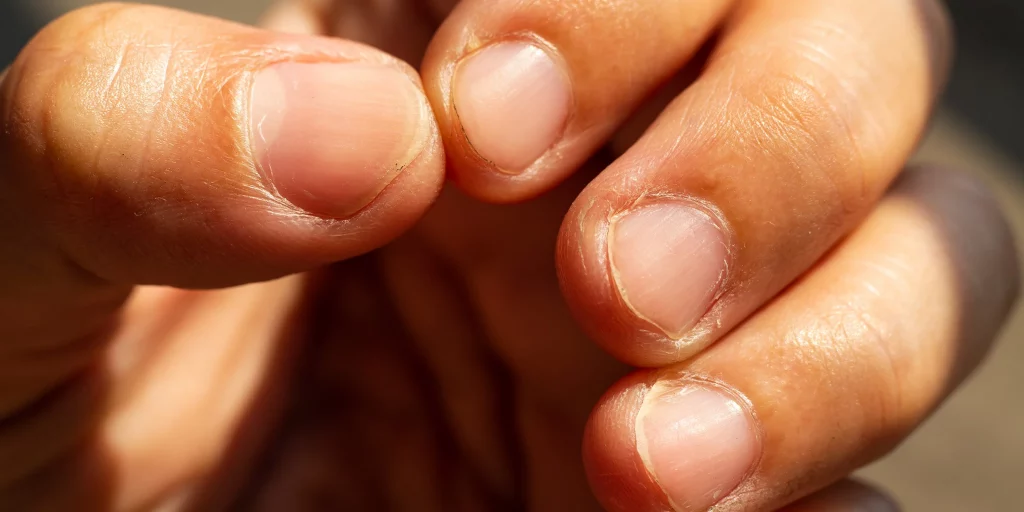
Small dents on the face of your nail bed are called pitting, and when they show up with no apparent pattern or reason, this could indicate an autoimmune complaint, a condition in which the body inaptly starts attacking healthy cells, leading to inflammation.
For illustration, pitting is generally connected to psoriasis (a skin condition that causes scaled patches to appear on the skin) and psoriatic arthritis (a type of arthritis that generally affects people with psoriasis). But the miracle can also be related to connective towel diseases like Reiter’s pattern (a type of arthritis started by an infection away in the body). When bending shows a regular pattern, it can be a sign of alopecia areata, a type of hair loss caused by an autoimmune response, according to the Mayo Clinic.
Still, you might be dealing with a miracle known as Beau lines, If what you’re noticing isn’t relatively bending but rather deep lines or grooves in your nails. Some lines on your nail can be normal, but Beau lines are noticeably deep and run width-wise on the nail, not vertically. These can appear after really violent stress to your nail making it stop growing (or grow more sluggishly than usual) for some time, according to the American Academy of Dermatology Association (AAD). Causes of this can include high fever, which is why there’s been concern about “ COVID nails,” or what some experts suppose perhaps Beau lines manifesting after COVID-19 infection.
2. Your nails are concave, like spoons.
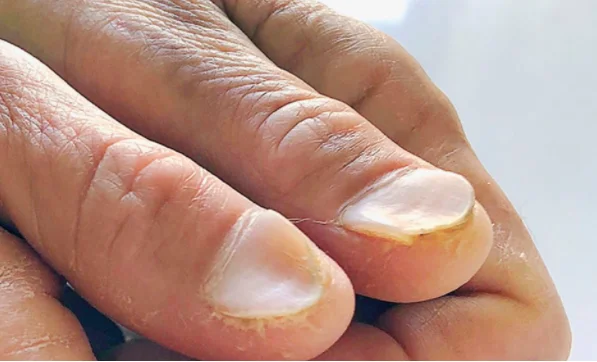
This is called koilonychia, and it can be a fully normal age-related change to your nails, Dr. Stern says. But it may also indicate iron- insufficiency anemia or other diseases in which iron isn’t metabolized rightly, like hemochromatosis and Plummer-Vinson Syndrome, which happens later in long-term, habitual iron- insufficiency anemia.1 If your croaker determines you have low iron situations via a blood test, treatment can generally help with the appearance of your nails. “ Anyone who suddenly develops ladle-shaped nails should have a workup by their croaker,” Dr. Stern says.
3. Your nails are white.
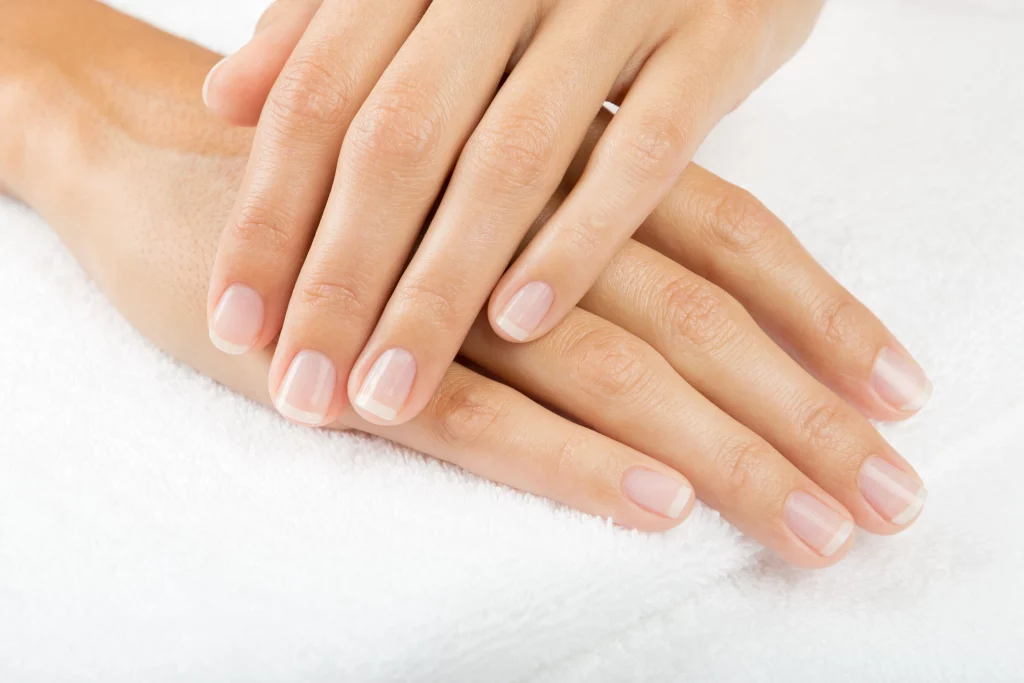
When the part of the nail closest to the cuticle is solid white and the distal part (the furthest section that’s still attached to the nail bed) is pink, this is called half-and-half nails, which. Stern says is also called Lindsay’s nails.
Occasionally the cause of this is unclear, and experts are probing the eventuality of Lindsay’s nails being inheritable. But other times, this half-and-half white coloring can be a symptom of a more serious issue like habitual order complaint. When two-thirds of the nail is fully white and just a splinter on the end of the nail bed is pink, it’s called Terry’s nails.2 “ This can be reflective of cirrhosis, congestive heart failure, or diabetes mellitus,” Dr. Stern says.
4. Your nails have brown or black stripes.
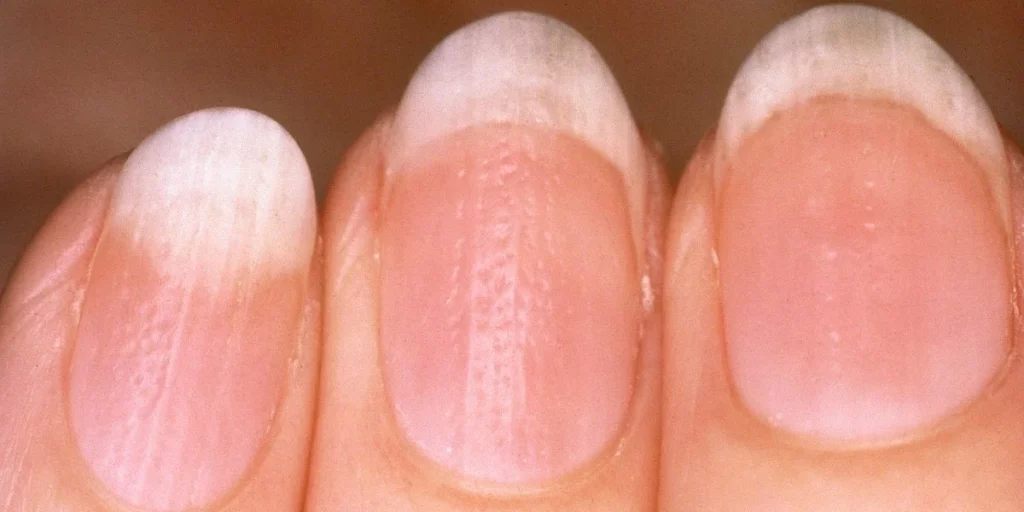
A dark brown or black stripe along with your nail, or brown colors girding the nail, will most frequently be benign intelligencers or saturation. This is most common in people with darker complexions because they tend to have further color-producing melanocytes in their skin and nails.3 When the melanocytes are stimulated, generally through trauma to the cuticle ( aggressive and repetitious cuticle pushing, cutting, picking, or smelling), “ these cells begin to produce color, appearing as a brown,length-wise band in the nail,” Dr. Stern explains.
But it’s important to know that this can potentially indicate carcinoma of the nail. “ Melanoma is a type of cancer that utmost people tend to associate with the skin; still, carcinoma can arise in the nail as well,” Dr. Stern says. “ The thumb, indicator cutlet, and great toenail are the most common integers to have carcinoma.”
Since it’s veritably delicate to distinguish early tubercles from benign colors, “ it is imperative to see a dermatologist for a thorough test and discussion” if you notice this symptom, Dr. Stern says. This is especially the case if the dark band is changing in some way, like widening or getting indeed darker. This is also crucial to keep in mind if you have dark skin, as you can be more vulnerable to getting carcinoma on your hands and bases (which can present on your nails). Nail carcinoma tends to be diagnosed late, but if you catch it beforehand, it’s frequently treatable.
5. Your nails are yellow.
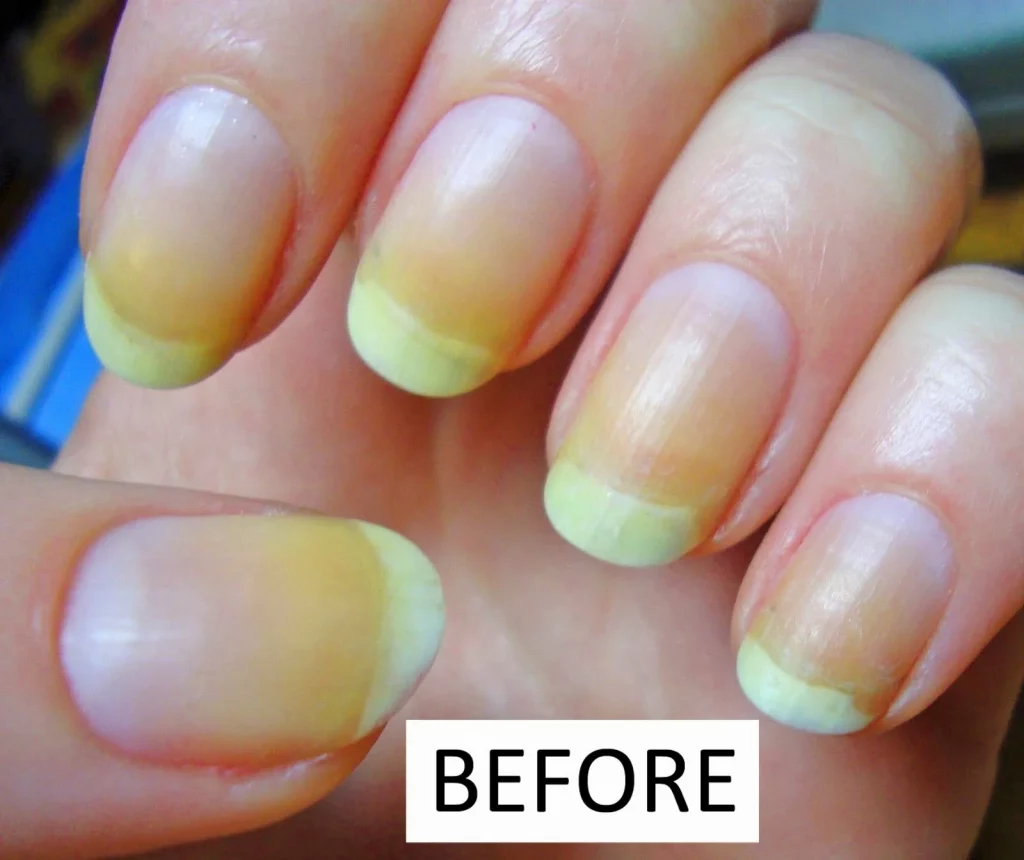
Dr. Stern notes that utmost general, nails turn unheroic because of nail polish use. So that’s a relief! But it’s also a case where you can tell further about your health from your nails and signal that you have a veritably rare issue called unheroic nail pattern, according to the National Organization for Rare Diseases. “ With unheroic nail pattern, nails appear thick and have an unheroic to green tinge,” Dr. Stern explains. “ They constantly warrant a cuticle as well as a lunula — the half-moon at the base of the nail that’s generally visible on the thumb and great toe.”
This pattern is a sign that the nails weren’t suitable to grow rightly and is frequently due to a lung condition called bronchiectasis or lymphatic complaint. “ Bronchiectasis is a condition in which damage to the airways causes them to widen and come squooshy and scarred,” Dr. Stern explains. It’s generally the result of a health issue like an infection and can compromise rotation, which affects nail growth. “ Because bronchiectasis tends to be habitual, unheroic nail pattern does too,” Dr. Stern says. Problems with the lymphatic system can impact rotation, precluding “ oxygen, nutrients, and blood from getting to extremities,” Dr. Stern explains, and occasionally causing an unheroic nail pattern.
6. Your nails turn blue or green.
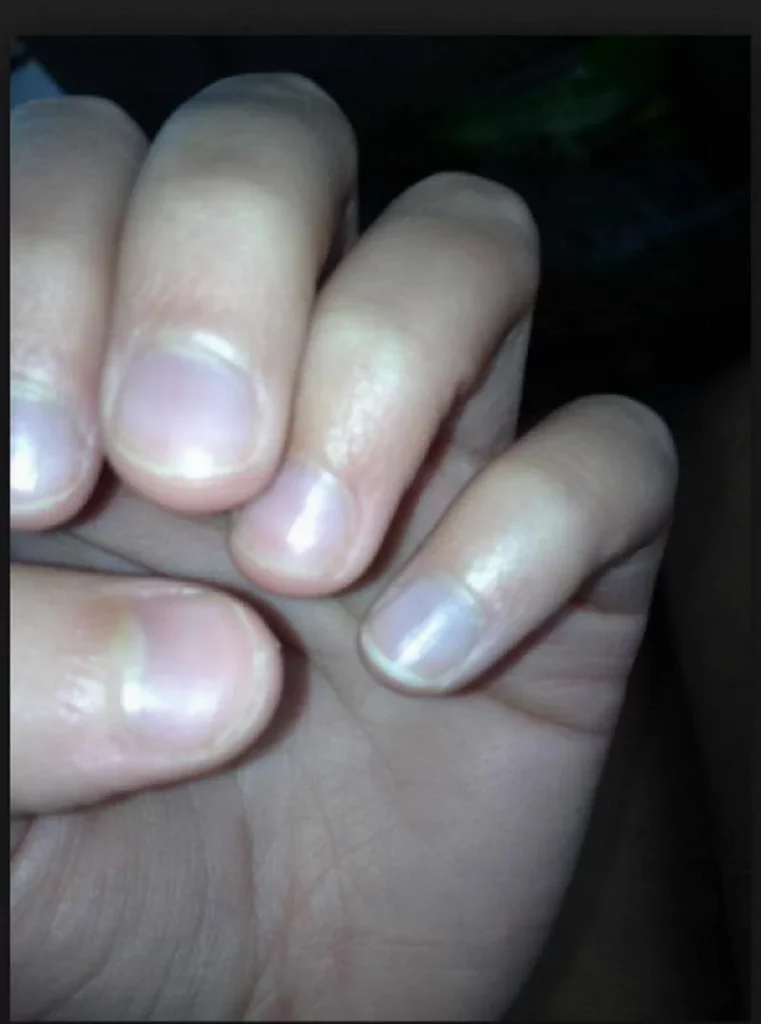
Discolored nails that are blue or green can indicate a range of health enterprises, depending on the specific color. For illustration, blue nails could mean you don’t have enough oxygen in your bloodstream, which can be with multitudinous medical conditions, similar to pneumonia, according to the AAD. But blue nails could also indicate some kind of poisoning. ( Generally, this occurs with argyria, or tableware poisoning, which only happens if you’re chronically exposed to large amounts of tableware, like from a manufacturing job or consuming tableware.)
Other times, your fingernail may turn greenish-black if you have a bacterial infection under your nail. The medical name for this is paronychia, and it can be if bacteria gets into a cut near your cuticle and infects the skin under your nail, according to the Cleveland Clinic. The skin girding your nail may come lit, blown, and painful. Generally, you’ll need to see a croaker to get an antibacterial drug, or differently, the infection will come worse.
7. Your nails are growing with a downward curve.

Still, according to Mount Sinai, If your nails are curving down and have a conspicuous rounded edge — kind of like upside-down ladles — this could be a sign of a condition called clubbing. Clubbing can indeed make the tips of your fritters appear blown or crimson. Your nail beds might feel soft and it can feel like your nails aren’t forcefully attached to the bed.
Clubbing is generally caused by a lack of oxygen in the blood, so it can be with numerous different heart or lung conditions. Lung cancer is the most common cause, but natural heart problems or infections of the heart or lungs can also give nails this conjoined appearance. It may also be a sign of IBD or another seditious problem in theG.I. tracts, as a celiac complaint.
8. Your nails separate from their nail beds.
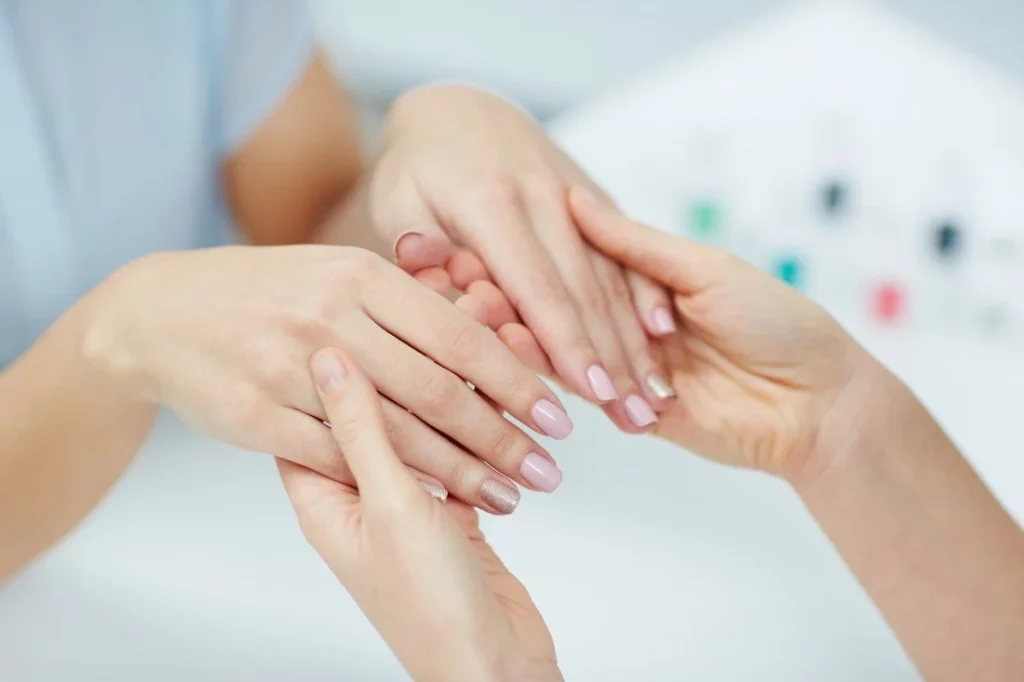
This condition, called onycholysis, is generally effortless and is generally more likely to be if you have longer nails. The most common cause is simply trauma to the nail, similar to too-important nail form or vexation from chemicals used during manicures.
Onycholysis can also be caused by a fungal infection in the nail, and it’s occasionally associated with psoriasis, according to the AAD. However, it can be a sign of hyperthyroidism (a hormone condition that increases your metabolism), Dr, If separation happens suddenly and by numerous nails. Stern notes.
There are multitudinous reasons your nails might separate from their nail beds, so your croaker may not be suitable to explain why it’s passing to you grounded on a physical test alone. So, you may have fresh testing, similar to a blood panel, to figure out what’s going on.
9. You have ridges in the center of your nail.

Still, you may have what’s called habit-tic nail trauma, If you notice piling or stripes on the middle of your nails (this kind of aesthetics is like a washboard) and you constantly pick at your cuticles. “ When people traumatize their cuticles, they accidentally traumatize the cells in the matrix, and also the nail plate doesn’t grow out easily,” Dawn Marie. Davis, M.D., president of clinical dermatology at the Mayo Clinic, tells Tone. In turn, your nails will develop this washboard appearance.
Habit-tic nail trauma is related to compulsive obsessive behaviors4 and may indicate that you have a lot of underpinning anxiety, like if you pick at your nails when you’re super upset. when. Davis suspects that if a case has this issue, she’ll ask about their anxiety and stress situations, and if applicable, relate them to an internal health professional who can help them develop strategies to manage these feelings.
10. Your nails come thick, grown, twisted, and opaque.
This is generally appertained to as “ ram’s cornucopia nail,” because your nails can act as a ram’s cornucopia as they grow out. (Medically, the condition is called onychogryphosis.) Occasionally, people get this condition because it runs in their family or because their nails endure repeated trauma without proper care.5 (For case, it can affect toenails if you constantly wear tight shoes that put a lot of pressure on your nails.) The AAD says ram’s cornucopia nail can also be if you have rotation problems that are the result of other medical conditions, similar to type 2 diabetes.
